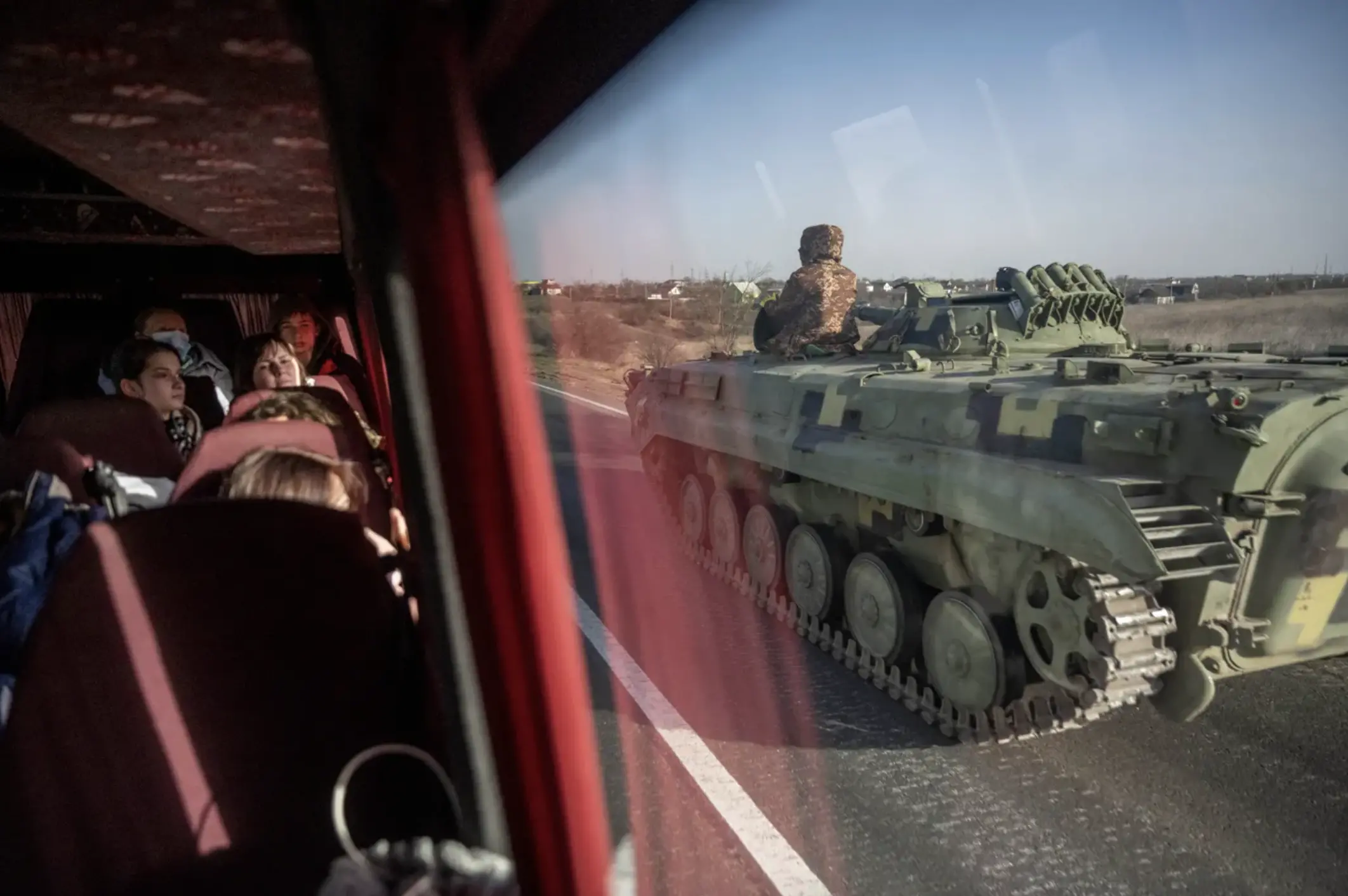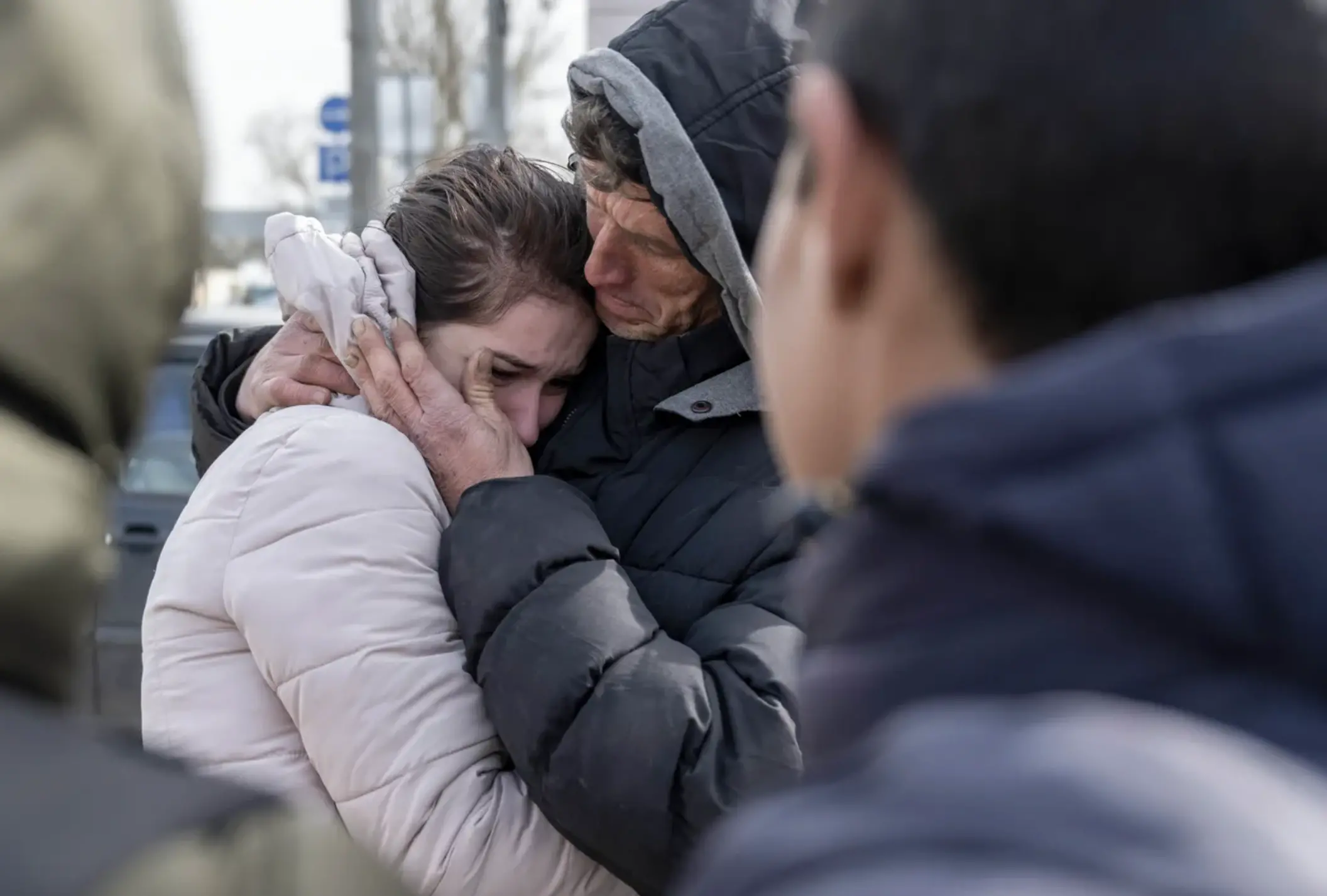PALANCA, Moldova — The number of refugees fleeing Russia's invasion of Ukraine has dropped dramatically, driven at least in part by social media posts and news coverage suggesting to Ukrainian civilians that their military is winning.
More than 3.9 million Ukrainians have fled the country, according to the UN, but most of those refugees crossed the border in early March. As the conflict drags on, many Ukrainians say they're committed to their homeland, and the flood of refugees has started to slow even as the fighting continues.
Tuesday, a Russian missile slammed into a nine-story government building in Mykolaiv, killing nine people, according to Ukrainian officials. The Russian military said it had drastically reduced its activity near Kyiv, Ukraine's capital — an assertion U.S. officials greeted with skepticism.

As a nonprofit journalism organization, we depend on your support to fund coverage of global conflicts. Help us continue funding the hard costs of in-depth coverage of the Ukraine invasion—including travel, hostile environment safety training, and the increased security expenses that arise from reporting in war zones.
“We are ready. We expect that Russia will come. And we will fight," said Odesa resident Alex Kobzev, 44, who has been coordinating aid distribution. “We are supposed to be all brothers, but we did not invite them here."
Ukrainian women and children are free to leave the country, but men of fighting age must remain. While Mykolaiv is eerily deserted except for soldiers, police officers and firefighters, Odesa remains largely functional, its shops and cafes open. Children play with dogs and kick soccer balls or walk with their families, and the electric trolleys are running.

At the height of the evacuations in early March, about 140,000 people fled across the Polish border every 24 hours. Now, about 30,000 refugees arrive per day in Poland, according to UN data.
In Moldova, daily refugee counts topped out at about 20,000 refugees per day in early March. It's now dropped to about 2,000 per day, according to border officials, and 21,000 refugees have actually gone back home.
Odesa resident Natasha Mala, 47, said she's not scared: “Nyet. We believe in the Ukrainian Army and we don’t want to be a part of Russia.”
'We are that united family': Russia's war uproots Ukrainian Jews amid false Nazi claims
The city's residents have hardened their homes against attacks, taking down street signs to make navigation harder for Russian invaders, and welding star-shaped vehicle barriers from railroad tracks along major roads. Around the city, billboards blare a message to the invaders: "Russian soldiers and sailors go home."
Refugee crisis will continue as long as Russia's assault is underway
Even though the refugee numbers are dipping, the overall tally is staggering: Nearly 4 million refugees have been forced to flee the country in the fastest-growing refugee crisis in Europe since World War II, according to the U.N. refugee agency. An additional 6.5 million Ukrainians have been internally displaced, the United Nations said.
Experts say the surges and slowdowns in refugee evacuations is typical. Many of the first to leave were people with money and vehicles, especially those with savings or remote-work jobs. Aid groups also whisked thousands of orphans to safety early on. Left behind are the elderly and the poor, people who lack the resources to simply leave behind their homes and vehicles, potentially forever.
Stephanie Nawyn, a Michigan State University associate professor of sociology and expert on forced migration, said it makes sense that refugee flows from Ukraine would be slowing more than a month into the war.
“What we have now maybe are people who are mostly stuck,” Nawyn said. “The shelling is happening more in certain places in Ukraine than others, so there’s people that maybe are staying put because they don’t know if the fighting is going to make it to them. But I don’t think we’re done seeing refugees (and) asylum seekers from Ukraine until Russia is done attacking.”
'Sirena, sirena, sirena!' Tense, fearful days in Odesa as Ukraine residents worry about Russian advances
At shelters in Moldova's capital of Chisinau, managers report a steady stream of refugees seeking help, but those who are arriving now come by bus, not personal car, suggesting the newcomers have less money. Complicating matters, those early arrivals with savings snapped up hotel rooms, apartments and Airbnbs in Chisinau, tightening the market for later arrivals.
Experts said even if Odesa and Mykolaiv remain mostly untouched, the constant fear and daily air raid sirens may build up until some people reach a breaking point and they decide to risk the unknown.
Many Ukrainians interviewed by USA TODAY on both sides of the border said viral Twitter and TikTok videos of soldiers destroying Russian tanks and farmers towing them away indicate Russia's invasion is failing. Others cited group chats on the Telegram messaging app as a valuable source of information, inspiration and daily military movement updates.

“Every day I talk with my friends who are soldiers. They say in two or three weeks, there will be victory," said Mykolaiv resident Suliman Altinsoy, 39, who was in Turkey when the war began.
In Chisinau, shelter managers said there's little to indicate the war will end soon.
“For many, many people, those who are staying in Moldova, they want to be close to home and return when it’s possible. And it’s important that they retain that hope," said Conor O’Loughlin, the lead coordinator of emergency refugee services in Moldova for Catholic Relief Services. "There’s a huge level of anxiety and concern for the future. Whatever we can do to provide reassurance is a huge step.”
Back at the Moldova-Ukraine border, Altinsoy waited in his Mercedes sedan for his wife to bring her parents and their three dogs across. The family lives part-time in Turkey, and Altinsoy was torn between going to their home in Mykolaiv or returning to Turkey, where his young son lives.
"If we didn’t have our son in Turkey, we would go back, too. Our house is there. Our work is there," Altinsoy said. “The Russian people thought our army was very weak. But the whole world can see that’s not true. Yes, we have had a lot of help but we are fighting. And the one who believes will win. We believe. So we will win."
Contributing: Tami Abdollah, USA TODAY











